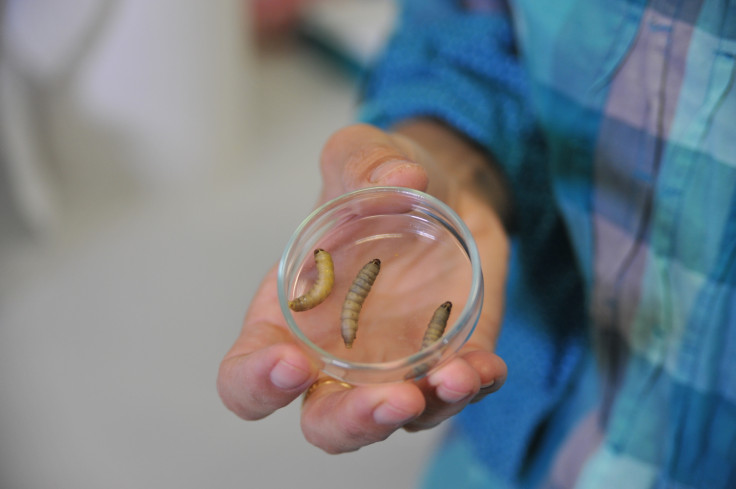Plastic-munching caterpillars discovered that could eat billions of kilograms of waste
Wax caterpillars can leave plastic shopping bags in tatters after just a few hours.
Federica Bertocchini, a scientist at the University of Cantabria in Spain and amateur beekeeper, made the discovery while tending her beehives. Wax caterpillars are bred for fishing bait but they are also a pest in beehives, where they chew through the wax honeycomb. Bertocchini put the caterpillars in a supermarket plastic bag made of polyethylene as she picked them out of the hives. Less than an hour later, the bag was riddled with holes.
Bertocchini brought the caterpillars into the lab to investigate what they were doing to the bags. Working with scientists at the University of Cambridge in the UK, she found that the caterpillars weren't just chewing holes – they were eating the plastic and breaking it down into another compound.
A hundred caterpillars munched through 92 mg of plastic in about 12 hours, leaving the lightweight bag in tatters. They broke the plastic down into ethylene glycol, which is used as an antifreeze. The research is published in a paper in the journal Current Biology.
"There is a chemical transformation of the polymer – this is telling us it's something more than the mechanical action of the caterpillar munching," Paolo Bombelli of the University of Cambridge and an author of the study told IBTimes UK.
The wax caterpillar is the only known insect to be able to break down polyethylene in this way. Exactly how the caterpillar is doing so is less clear. It could be the caterpillar itself, or bacteria living in its gut. The scientists also mushed up the caterpillars and spread the goo onto plastic shopping bags, to see if it still broke it down to the antifreeze compound. The caterpillar mush still worked, but not as efficiently as the living caterpillars.

"We were excited to see that the mush was in any way able to still degrade the plastic," Bombelli said. "This is telling us that probably there is some enzyme activity breaking down the polyethylene.
"This is great because we really hope to identify the enzyme. If we did that, then we could express this enzyme in other organisms, such as yeast or the bacterium E. coli, and use them on an industrial scale."
Yeast or bacteria might be more efficient at breaking down the plastic than caterpillars on a large scale, but it's possible that caterpillars themselves could be used to break it down. However, ethylene glycol is toxic to species including humans, so letting wax worms loose in a landfill may not be a good solution. But the wax caterpillars appeared to be perfectly healthy after feeding on the plastic bags, and were able to turn into a moth.

There are several more stages of research needed before the caterpillar's trick could be used to tackle the mountains of plastic that go to landfills every year.
"One of the main questions we're trying to answer now is whether the plastic is degraded by the caterpillar itself, bacteria inside the caterpillar, or a combination of the two."
A trillion plastic bags are used every year. Polyethylene makes up about 92% of all plastic produced. An organism that can break it down and apparently remain unharmed may have the potential to revolutionise how plastic is thrown away. At the moment, billions of kilograms of plastic ends up in the ocean, where it collects toxins and is eaten by wildlife.
Bombelli warns against being complacent about recycling and cutting back on use of plastic in the wake of the discovery.
"We definitely don't want to give the impression that if this research is successful that people can justify creating more plastic waste. Our aim is to provide a tool that might be able to contribute to sorting out the problem of plastic waste."
© Copyright IBTimes 2024. All rights reserved.






